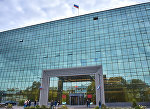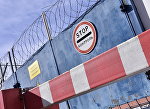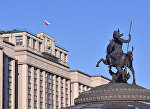The Russian Legal Information Agency (RAPSI) presents the first law firm media coverage ranking in Russia. The ranking comes as part of a series of studies aimed at measuring the transparency and accessibility of the Russian judicial system.
The ranking is available here >>>
The federal targeted program entitled “The Development of Russia’s Judicial System for 2007-2011” identifies ensuring increased openness and transparency of the judicial system as the primary task in achieving its main goal – to enhance the quality of justice and improve the protection of rights and legal interests of both individuals and legal entities.
The legal industry, including law firms and lawyers, are playing an increasingly important role within the Russian judicial system. Many practicing judges and legal theorists have spoken in favor of transforming the system so that one day only licensed attorneys will be allowed to represent parties in court. It seems that due to their ever-increasing role in the judicial system, this idea may come to fruition.
One of the consequences will be that the legal industry will be increasingly forced to play by the system’s rules and requirements. Part of this ever-growing responsibility will be to become more open and transparent. Currently, we believe, the Russian legal industry is still too closed. Law firms do not provide media enough information, due to both industry custom and firm policy.
Nevertheless, there does exist a certain degree of law firm media coverage.
This research was conducted in order to establish how transparent Russian companies are in terms of media coverage. Independent lawyers, legal market PR experts, journalists, and leading Russian law firms were polled in order to compose the ranking.
RAPSI identified 100 firms the Russian legal community considers most cited by the media. However, some firms opted out of appearing in the ranking.
Yandex search results were also employed in the ranking process. RAPSI tallied how many times each firm had been cited by name within Yandex’s news service. In the Yandex searches, the words “law” or “legal” were typed alongside firm names in order to filter out irrelevant results. Firm names were typed exactly the way they were written on their websites.
Apart from the Yandex newswire, the firms were also cited alongside visual content, such as photos and videos. In analyzing this visual content, RAPSI employed the same methodology, by tallying how many hits Yandex’s Image and Video searches produced. These numbers were used as the second and third criteria in the ranking.
One measurement unit was set to equal the number of hits the least mentioned firm received in the Yandex searches. These measurement units were used to establish the media coverage index.
RAPSI earlier employed a similar methodology to rank commercial courts. This proprietary ranking technique was highly praised by the courts, many of which decided to post the court ranking on their own websites.



